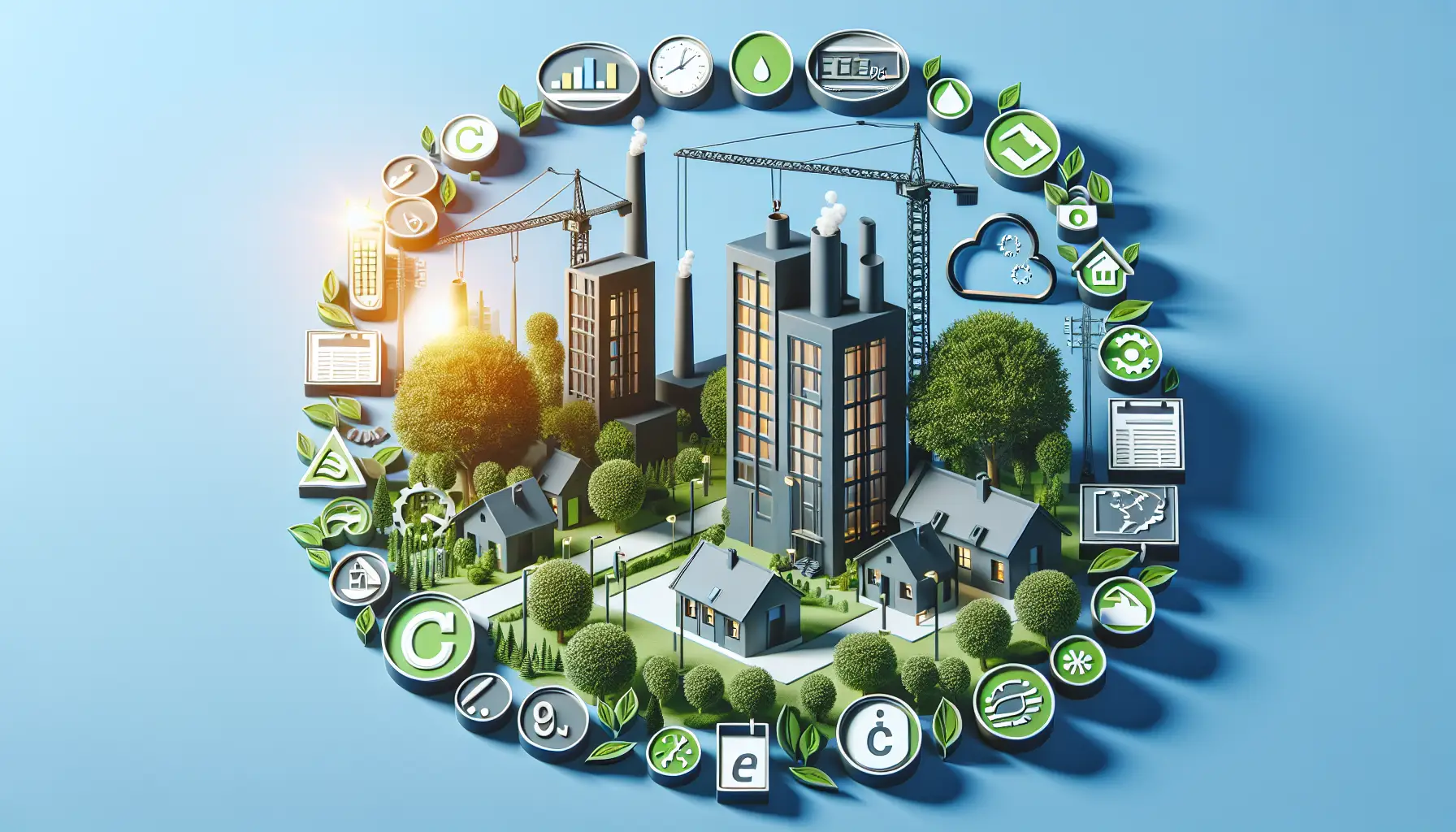Why Carbon Emissions Reports and SAP Calculations Matter in the UK
As more people place growing value on greener living and sustainable housing, understanding how we measure a building’s environmental impact is vital. Two key elements that play a big role in UK construction today are Carbon Emissions Reports and SAP Calculations. These two go hand-in-hand when helping to build homes that use less energy and leave a lighter mark on the environment. At Ratio Seven, we believe in making these terms easier to understand, not just for builders and architects, but for everyone.
What is a Carbon Emissions Report in the UK?
A Carbon Emissions Report UK measures the amount of carbon dioxide (CO2) a building releases every year. This doesn’t just happen by chance; it’s calculated through how much energy the home uses. This includes heating, hot water, lighting and sometimes even cooling. All these everyday activities push out carbon into the environment, and this report lets us keep track.
When we build new homes or make major changes to existing ones, this report shows if the planned work will meet UK building regulations. The aim is to make all buildings use less energy, which helps in the larger goal of cutting down greenhouse gas emissions across the country.
Local councils usually ask for the Carbon Emissions Report before they approve planning permission or building regulations. So, developers, builders and even homeowners looking to build or extend their homes need to make sure they meet these requirements early.
What Are SAP Calculations?
SAP stands for Standard Assessment Procedure. It’s a way to judge how much energy a home will use, and how much CO2 it will release. These calculations form the backbone of the Carbon Emissions Report. Without them, you can’t move forward with your building project because you won’t meet government targets for sustainable homes.
Every new dwelling built in the UK must go through SAP Calculations. They measure details like insulation levels, window glazing, ventilation systems, heating types and even the shape of the house. They look at how well a home holds heat in colder months and how well it stays cool in the summer.
At Ratio Seven, we work with housebuilders, architects and self-builders across the UK who use our SAP Calculations service to stay on top of regulations and make sure homes not only pass but perform better in the real world too. You can read more about what we do and how our team supports you at Ratio Seven.
Why These Reports Matter for Housebuilders and Homeowners
Housebuilders need Carbon Emissions Reports and SAP Calculations to pass the planning and building stages, but there’s more to it than getting paperwork done.
For builders, it marks them out as being responsible in a world that cares more about saving energy. Homes that pass SAP tests often use less power, meaning long-term cost savings for homeowners. This makes them more attractive, whether you’re looking to sell or rent.
For homeowners, it means living in a house that uses less energy. That means lower bills and more comfort throughout the seasons. In other words, you’re saving money and helping the planet at the same time. You’re also future-proofing your investment: homes with poor energy ratings might struggle in the coming years as new rules and taxes come in.
If you’re thinking of starting a new build project, visiting Ratio Seven can help guide you through the SAP and Carbon Emissions reporting process from start to finish.
The Link Between SAP Calculations and Carbon Emissions
SAP Calculations create the numbers used in a Carbon Emissions Report. You can’t have one without the other. SAP looks at how the home is built, whether it loses heat too quickly, has poor windows or uses old-fashioned heating systems. From there, it calculates how much CO2 the home will release each year.
This then feeds into the Carbon Emissions Report, which sums up the environmental effect of the whole project. Local councils and building control officers use this data to see whether the home meets current energy-use targets.
The UK government requires these targets to be ever more strict. A few years ago, homes needed only to meet certain values. Today, we must also look at how homes can be ‘zero carbon’ or at least better than before.
If SAP predicts your home will release too much carbon, we can work with you to improve the design before you build. That could mean adding insulation, using better boilers, or bringing in solar panels. We offer practical suggestions that don’t cost the earth.
Carbon Emissions in UK House Building: The Government’s Role
Over the past 20 years, the UK has kept tightening the rules on how buildings should perform. SAP Calculations were introduced in the early 1990s and are now on version 10. Every update asks for lower energy use and better results for people living in those homes.
Part L of the Building Regulations sets out how energy is measured in housing projects, and SAP is the tool builders must use to show they comply. Local authorities won’t approve your application unless your plan includes this data.
The government aims to reduce the country’s overall CO2 footprint. Housing makes up about 25% of the total energy use in the UK, meaning every small change makes a big impact. By 2050, the UK’s plan is to reach net zero, and building energy standards are key to reaching that goal.
That’s where having the right partner, like Ratio Seven, matters. We talk with planners, developers and tradespeople in plain English so everyone understands the process. If we spot problems, we find answers. If you’re ahead of the curve now, the future will be easier for you.
Builders Must Plan for SAP Assessments
You can’t leave SAP Calculations until the build is nearly done. The design stage is the best time to get started. That’s when we can suggest what materials to use, where to place windows, or how to heat the space using less power.
Getting these choices right early means fewer changes later and often cuts down on wasted cost. Imagine finishing your walls only to find out they won’t pass the SAP test; tearing them down would waste materials and money.
We often work with building teams right from the moment they start drawing up plans. Our job is to help make sure you don’t hit problems when applying for planning. Visit Ratio Seven to learn more about how we work with you during the design and build stages.
This also means you’ll stay ahead of changes in the rules. Every few years, the government updates the SAP version and raises the standard. Starting early means your home might pass future tests today, and that’s a long-term win.
Renovation Projects and SAP Calculations
SAP Calculations aren’t just for new builds. If you’re converting an office into flats, adding a major extension or changing use, you will still need to run these checks.
Let’s say you have an old barn. You want to turn it into a house. The original building might let out heat quickly, use very little natural light and have no insulation. With SAP Calculations, we can measure how much energy would be needed to turn that space into a warm, safe home. Then we’ll offer ways to lower that amount.
For renovation projects, keeping the look and feel of the original building while fixing carbon and energy issues takes smart planning. It also means ticking all the right boxes for legal checks. The team at Ratio Seven are experienced in these kinds of balance points, and we’re happy to guide you through it.
A Look at a Finished SAP Project

We recently worked with a family building their forever home in a rural part of the UK. They wanted warm winters, cool summers, and to keep running costs low.
They sent us floor plans, and we ran SAP Calculations. The first design scored just below the mark needed to pass Building Regulations. We recommended stronger insulation in the walls, better triple-glazed windows, and switching the gas boiler for an air-source heat pump.
After some tweaks, their final Carbon Emissions Report showed a major drop. When we handed over the data, building control gave the green light. Now, not only is the family proud of their home, but it costs less to run and feels nicer to live in. They also know it’s ready for the future.
FAQs
Do I need SAP Calculations for house extensions?
Yes, in many cases extensions need SAP Calculations, especially if they include heating, kitchens or significant room additions. It depends on the size and the effect on energy. We can advise if you’re not sure.
What’s the difference between EPC and SAP?
An EPC (Energy Performance Certificate) is based on SAP Calculations. SAP is the process; EPC is the result. Every new home must have both before it’s sold or rented.
Can I improve my SAP rating after building?
Yes, by adding better heating, insulation or windows. But it’s easier and cheaper to get it right before you build.
Do self-builders need Carbon Emissions Reports?
Yes. Whether you’re a large builder or building your own home from scratch, you still need to meet building rules.
What happens if I fail SAP?
Failing means your plans didn’t meet Building Regulations. We can help look at cost-effective changes to bring your project into line before inspection.
Let’s Build a Better Future
Carbon Emissions Reports and SAP Calculations might seem complicated initially, but they play a huge role in creating warmer, cheaper, and legally compliant homes. Getting the right advice early on can save time, stress and money later. Whether you’re working on a new build, a barn conversion, or a major extension, it pays to think about energy performance from the start.
At Ratio Seven, we make the process straightforward. We’ll review your plans, give clear feedback, and guide you through each step to meet the current regulations. We’ve helped hundreds of projects pass with confidence, and we’re ready to do the same for yours.
Talk to us today to find out how we can support your next project with SAP Calculations, Carbon Emissions Reports, and more.




